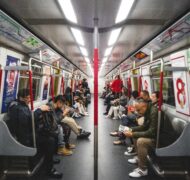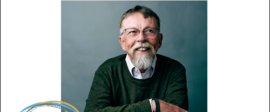Public Transportation
Book / Produced by partner of TOW
There are many complaints about public transport. In most cities it has been in decline for decades. In advanced Western societies the heyday of mass transit by train, bus, tram and ferry was in the earlier part of the twentieth century. Only in former communist countries like Russia, or smaller overpopulated countries like Japan, are the bulk of the people moved around every day by public transport. In the West some countries and cities maintain excellent public transport systems; the more densely settled and highly efficient parts of Europe have an integrated rail system, Zurich has its trams, and Paris the Metro. Elsewhere a city is sometimes graced by a particular form of public transport facility that functions well, but rarely do all parts of the system work together to provide an integrated transportation service.
People (mostly those who hardly use public transport) often blame government cutbacks for the deterioration of such transportation services. The main cause, however, was the introduction of the automobile, and the major culprit the average person. Los Angeles is a perfect example. It is little known that until the 1920s Los Angeles had the largest and most efficient public transport systems in the world, with over 10,000 miles of tramlines. But as automobiles became less expensive, people chose to buy and use them instead. People’s demand for better and faster roads soon began to take money away from public transport, and in time even tram routes were paved over to form the huge freeways that are synonymous with the city. Auto owners now argue that public transport is not as important as the betterment of the road system.
Other arguments against public transport have been its lack of convenience in some areas and problems with safety in larger cities. The first stems in part from the original cutbacks but also from the complex character of cities that developed with the automobile. The second is a byproduct of other difficulties, in part, the middle-class flight from the city center.
Even with less money spent on it in a cost-saving period, the expense of public transport has led some politicians to argue that it should pay for itself and not be a drain on the public purse. This is extremely short-sighted and unjust. The fact is that by moving around enormous numbers of people in the most economical way, public transport supports the whole infrastructure of a city’s economy and contributes significantly to its productivity. Think of the public cost and chaos involved in turning most of this over to the automobile, even if everyone could afford to own one. Such a policy is also unjust because it places a further financial burden on those who are least able to carry it—disadvantaged groups who most depend on public transport. They are already subsidizing the even greater cost of providing freeways and improving roads for better-off members of society. On the contrary, it is to a city’s advantage to invest heavily in the very best public transport system where it can be most effective. There are movements and groups in the city which can be served better by private transport, and it is important to know the proper benefits and limits of both.
The coming of the automobile brought many advantages, especially greater convenience, flexibility and privacy. But this was at a heavy price: the toll of deaths and injuries, escalating pollution and disrupted neighborhoods. The automobile also marginalized groups who were too poor, young, infirm or old to purchase one. Those who relied on public transport—the needy and unemployed, many ethnic groups, young mothers and children, the elderly and incapacitated—became more and more disadvantaged. In time, public transport covered fewer areas, took longer to reach destinations, became less comfortable and, as mentioned, grew increasingly unsafe. On the whole, the vote for the automobile was a vote by the better off against the worse off, and Christians were involved in this as much as others. Scarcely any of those who owned a car thought or cared about its impact on these people or on the quality of city life. As local governments ask for more money to improve public transport services, it is often car owners who vote these down in favor of improved roads.
The Positive Future for Public Transport
In the last decade or two public transport has begun to make a comeback or has undergone redevelopment. Around and between many large cities, new rail and tram lines are under construction. Very fast trains are being introduced, and articulated trams carry more people and move around more quickly. There are also more regular and accessible commuter air flights. On waterways, hovercraft and aqua jet ferries have improved the efficiency of ferry services.
With car travel becoming more frustrating due to gridlock on freeways and longer travel times, over the last ten years use of public transport has increased for the first time in decades. The numbers may not as yet be large, but they continue to grow. It is news indeed when the fastest-growing commuter train service in America is right in the heart of Los Angeles, the city most identified with, and shaped by, the automobile commuter.
Other interesting experiments in public transport are presently under construction. The introduction of very fast trains on high-density routes has already been mentioned. In several cities door-to-door shuttle or minibus services, once only for the handicapped and elderly, have now become computer coordinated and available to everyone: this is an attempt to combine the advantages of taxis and buses at a reasonable cost. In some places, like Hamburg in northern Germany, “smart” traffic systems regulate signals and road use by means of a central video and computer headquarters to improve traffic flow and advise on the quickest routes. In developing economies, like Russia, where there are not enough cabs to go around, anyone is permitted to use their car as a taxi.
What can we, as Christians, do to improve public transport? Depending on the position we are in, there are a number of steps we can take:
Use public instead of private transport where appropriate, thus supporting the system and also becoming acquainted with the kinds of people who use it, many of whom we have little contact with under normal circumstances.
Raise people’s awareness of the importance of public transport in our congregations, and encourage members to use it where practicable or possible.
Be prepared to vote in favor of initiatives which will improve public transport, especially for more disadvantaged groups, even if it takes funds away from road-building in one’s own area.
Seek ways individually or corporately of advocating for an equitable distribution of transport possibilities for all groups in society, especially where these are eroded by private transport.
Be willing to pay the true costs of private transport so that more money will be available to improve the public transport from which so much money has been diverted.
At root we need to undergo a basic repentance on this matter. We require a new frame of mind about public transport, seeing it as an essential part of life in the city which we have a responsibility to help maintain, whether or not we use it much ourselves. Public transport makes a vital contribution to the efficiency, productivity and quality of life of a city. Supporting it is one of the ways in which “we seek the welfare of the city,” as we have been instructed to do (Jeremiah 29:7 RSV). Public transport also has a vital contribution to make to the life of marginal people in the city. This means that supporting it is one of the most significant acts of social justice we can perform. We do not generally think of public transport in that light, but it is time we began to do so.
» See also: Automobile
» See also: City
» See also: Commuting
» See also: Mobility
» See also: Pollution
» See also: Waiting
References and Resources
T. Bendixson, Instead of Cars (London: Temple Smith, 1974); D. Engwicht, Reclaiming Our Cities and Towns: Better Living with Less Traffic (Philadelphia: New Society, 1993); J. Lengenfelter, “Public Transport and Urban Witness,” Urban Mission 5, no. 4 (1988) 5-10; S. Plowden, Taming Traffic (London: Andre Deutsch, 1980); T. R. Stone, Beyond the Automobile (New York: Prentice-Hall, 1971).
—Robert Banks





